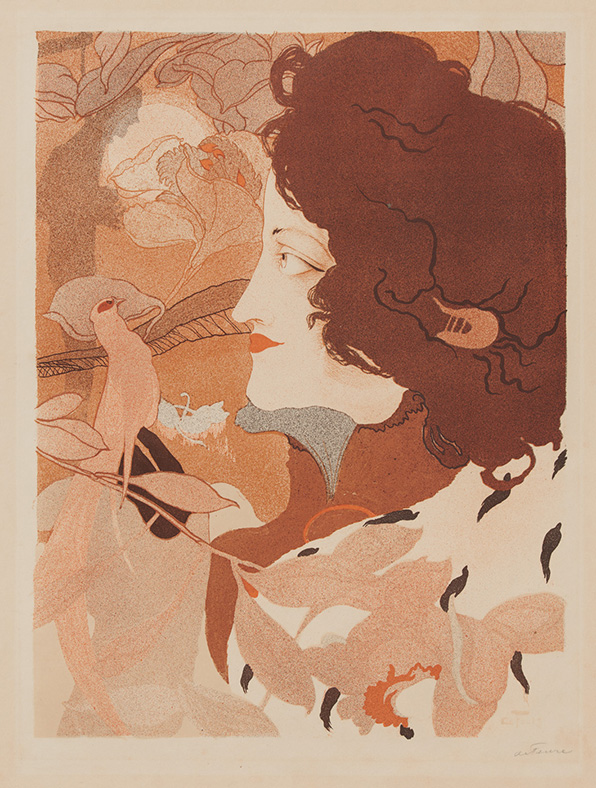
December 14, 2019–FEBRUARY 13, 2020
ARABESQUE AS DESIGN PRINCIPLE
Georges de Feure (French, 1868–1943), La femme fatale, 1896. Color lithograph, image: 13 3/4 x 10 1/4 in. Clark Art Institute, Acquired with funds donated by Jeffrey Shedd, 1991.15
Late in the nineteenth century, a multitude of European artists working in different modes achieved remarkably innovative results by employing all-over arabesque and letting the sheer energy of the line lead where it would. Responding to distinct aesthetic needs, this pictorially decisive arabesque could take a languorous, wandering form or, equally and oppositely, explode with dynamism. At times, arabesque line all but took over the picture, dissolving the distinction between figure and ground. The Nabi artists, a vanguard group working with flat planes of color and decorative patterning across a wide range of art forms, undertook a succession of experiments with all-over arabesque. These culminated in the high-spirited poster designs of Henri de Toulouse-Lautrec and Alphonse Mucha and also found echo in the work of Henri Matisse. Parallel developments in music and dance enshrined arabesque’s status as a cross-cultural and cross-media phenomenon, unrivaled as a symbol of imaginative freedom.

Featuring an essay by Anne Leonard, Manton Curator of Prints, Drawings, and Photographs, Arabesquetraces the role of this curvilinear decorative motif through a variety of styles and media in European art. An elegant companion to the exhibition, this sixty-four-page softcover publication includes fifty-seven color illustrations highlighting objects from the show and their influences.

